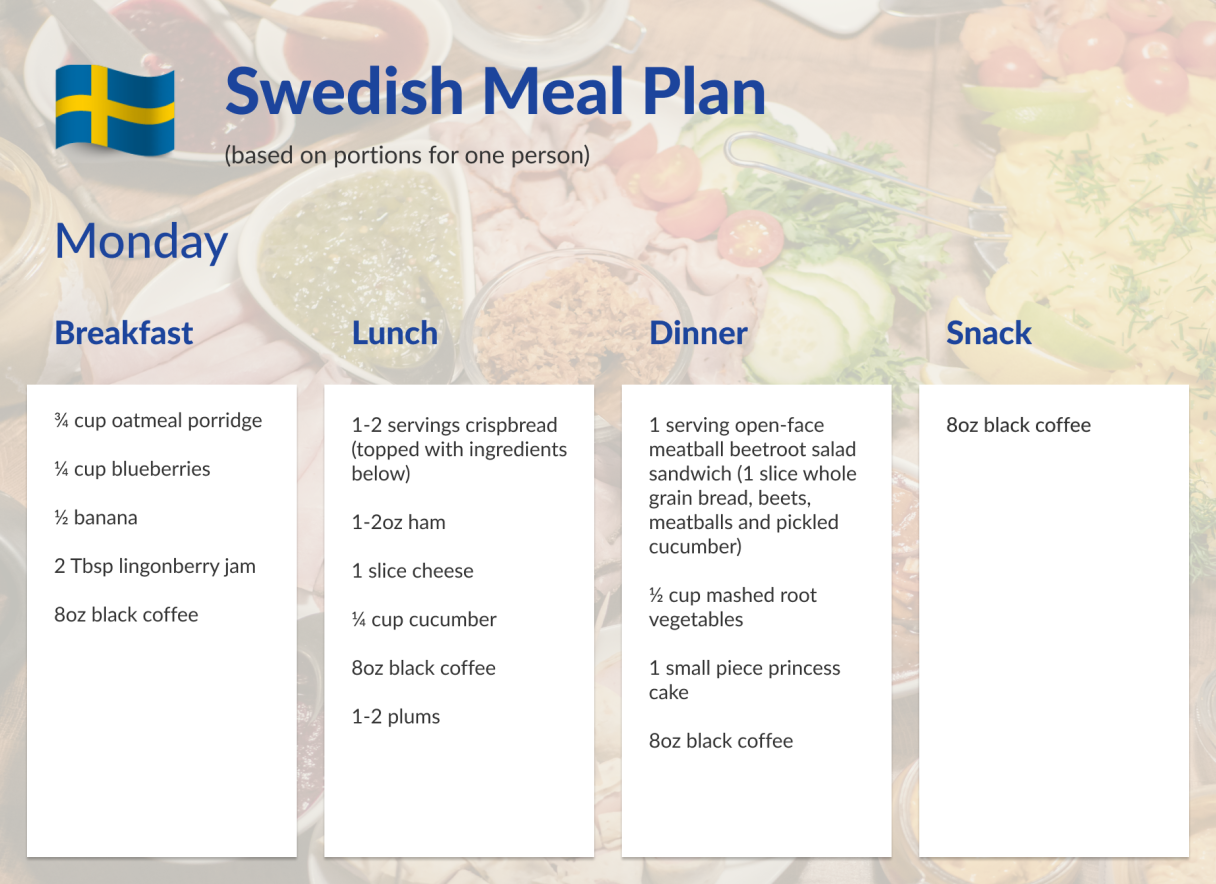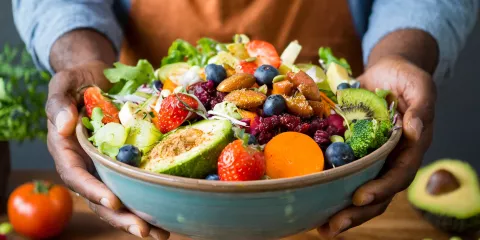
Meal Plan Created By: Amanda Kostro Miller
You’re probably aware of the Danish word hygge. It’s a word that’s become trendy over the past few years, and in America, it’s come to refer to winter living that is cozy and content. And while snuggling down with a book and hot chocolate sounds lovely, it doesn’t always lead to the most balanced lifestyle. Today, we’d like to introduce you to the Swedish word lagom, which refers to a lifestyle that is balanced and moderate and takes the welfare of the community into consideration. Lagom is not too much, and not too little1 - it’s just right. And that’s what we’re talking about when we discuss December’s cuisine of the month - a focus on Swedish cuisine that balances healthy, whole foods with small indulgences for the perfect winter meal plan.
Download The Printable Meal Plan
Is Swedish Food Good For You?
Swedish cuisine is both tasty and healthy, providing a good balance of fish, vegetables, whole grains, and fermented foods.2 And all those fish and veggies make a difference: the Swedish diet actually contains less sugar and fat, but twice the fiber and seafood than the typical American diet.3 So while some of these foods - like pickled herring or kefir - might feel unfamiliar, it’s a good idea to incorporate them into your diet. And thankfully, there are some easy - and tasty - ways you can start to include traditional Swedish foods into your meals.
Health Benefits Of Swedish Food
Fish
The Swedish diet is rich in fish - but not just any fish. To reap the benefits of Swedish cuisine, you’ll want to incorporate fatty fish into your diet, such as salmon, sardines, and herring.4 Fatty fish are rich in omega-3s, which studies show have major health benefits for your heart, brain, lungs, and circulation.5 Consider incorporating several servings of fatty fish each week into your diet which may help reap additional benefits, such as supporting better quality of sleep.6
Fermented Foods
A key feature of Swedish cuisine is fermented food, including keifer, yogurt, and pickled herring. Fermented foods are superfoods, and they’re great for your gut health because they support healthy microbial balance . Additionally, by supporting the production of good bacteria, consuming fermented foods can assist your body in making certain nutrients, such as vitamins B1, B2, and B12.7 And foods like keifer, which is rich in protein, calcium, and magnesium, is a fantastic addition to your diet. It’s a powerful probiotic, and can support improved bone health.8 While fermented foods might seem challenging to incorporate into your diet, a few swaps - like eating your morning cereal with buttermilk instead of regular milk - can make including these foods an easy process.
Whole Grains
The whole grains in Swedish food are dense and rich in fiber. There’s no white bread here - instead, the Swedish diet relies on sourdough rye bread, whole-grain crackers, and muesli. These complex carbs are rich in fiber, which keeps you feeling full for longer.9 And because whole grains are packed with nutrients like protein and B vitamins, you can feel good about incorporating these carbohydrates into your diet.10
Little Indulgences
The Swedish tradition of fika is central to the Swedish diet.11 Fika is a daily, mid-morning coffee break that involves stepping away from work to enjoy coffee and a sweet treat. Like the Swedish diet, the act of fika reminds us that life is all about balance - and that a diet of fish, whole grains, and vegetables should also include coffee and a few baked goods.
Good For You Swedish Recipes

When you download our free, 7-day meal plan, you’ll enjoy tasty and healthy Swedish foods that will brighten up any winter day. For example, you’ll find this gorgeous roasted root vegetable salad, this cozy kottsoppa (beef and vegetable soup!), and even these tasty ginger cookies - because balance is key.
References
1 https://www.bbc.com/travel/article/20170818-the-swedish-word-thats-displacing-hygge
2 https://www.nbcnews.com/better/pop-culture/what-nordic-diet-why-do-doctors-dietitians-even-psychiatrists-it-ncna885531
3 https://www.healthline.com/nutrition/the-nordic-diet-review#the-diet
4 https://www.webmd.com/diet/ss/slideshow-nordic-diet
5 https://www.webmd.com/diet/ss/slideshow-diet-fatty-fish-omega-3s
6 https://www.healthline.com/nutrition/11-health-benefits-of-fish#TOC_TITLE_HDR_11
7 https://health.clevelandclinic.org/5-reasons-you-should-add-more-fermented-foods-to-your-diet-infographic/
8 https://www.healthline.com/nutrition/9-health-benefits-of-kefir#TOC_TITLE_HDR_5
9 https://www.webmd.com/diet/ss/slideshow-nordic-diet
10 https://www.webmd.com/food-recipes/features/reap-the-benefits-of-whole-grains
11 https://www.thekitchn.com/what-in-the-world-is-fika-an-intro-to-the-swedish-coffee-break-the-art-of-fika-219297












